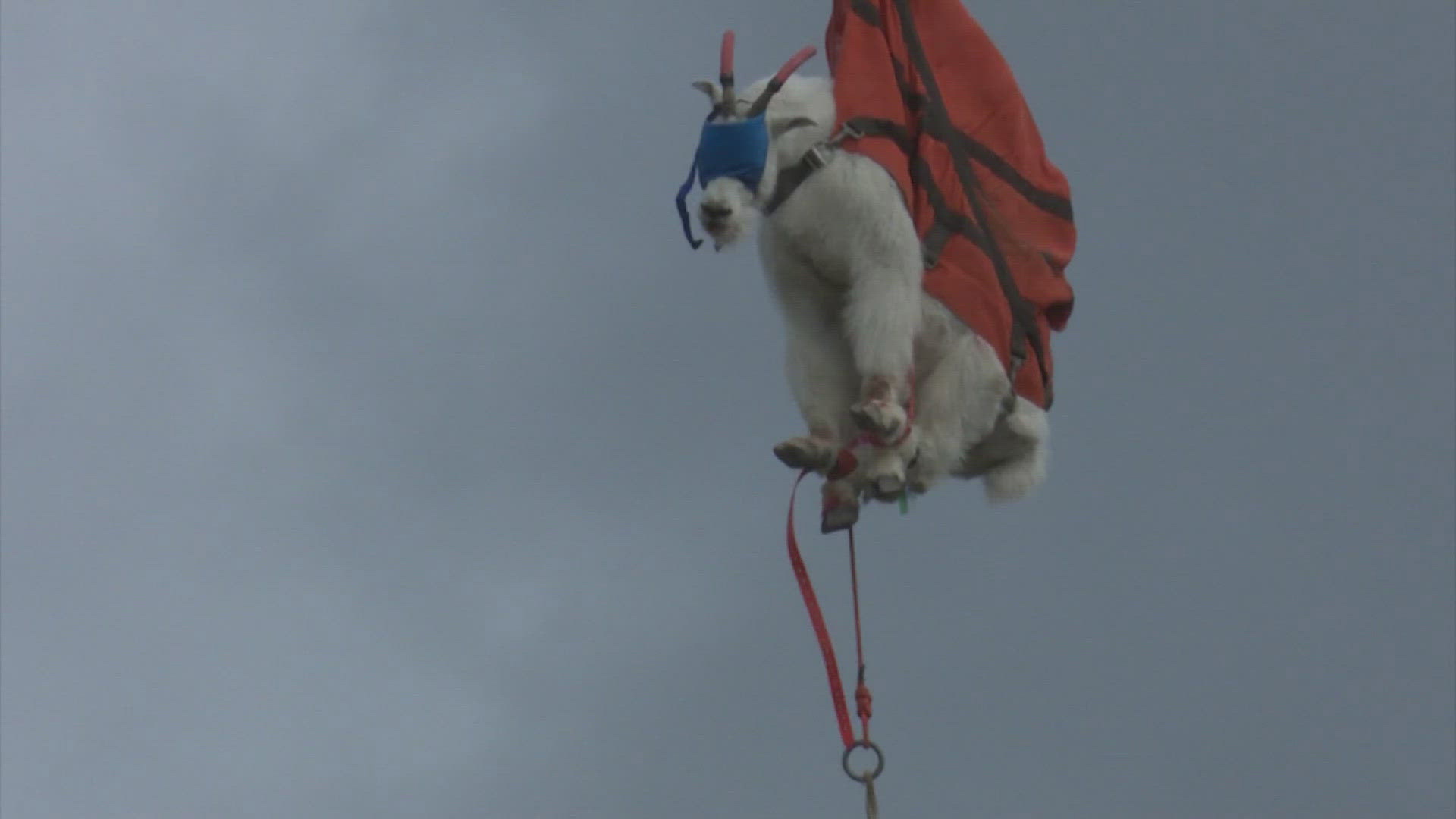NORTH CASCADE, Wash. — By 2020, hundreds of mountain goats had been moved from the Olympic Peninsula to the North Cascade Mountains.
Researchers tracked 151 of them. To this day, only four of them are known to be alive.
Still, experts say the project was not a failure.
Crews used tranquilizer darts before blindfolding the creatures for their helicopter journeys to their new environment.
The goats were introduced to the Olympic Peninsula in the 1920s by sportsmen.
They were relocated because they were not native to the Olympics, were harming vegetation, and were becoming aggressive. In fact, one killed a hiker in 2010.
"We were seeing more visitor impacts and vegetation impacts, so it's like, we needed to do something," said retired Olympic National Park biologist Patti Happe, who oversaw the project.
If the goats weren't relocated, Fish and Wildlife officials say they likely would've been hunted and killed by the state.
A total of 325 were airlifted from the Olympic Mountains to the North Cascades over the course of three years, but almost all of those goats are now unaccounted for or presumed dead.
At the same time, goat populations in the Cascades were declining. The hope was to bolster the numbers there.
That didn't happen.
"This was not a failure," said Happe. "As with anything in nature, the picture is more complex the more you delve into it."
Happe said the die-off is alarming but not surprising. She concedes stress from the airlift likely contributed to some deaths, but old age and predation were likely factors, and dead batteries on radio collars caused researchers to lose track.
"The tightest relationship to those declines is climate change," said Happe. "It's that warmer summers and drought conditions lead to poor forage conditions. That means the goats don't go into winter in as good a shape as we'd like. That leads to die-off."
There are now only about 3,000 mountain goats in Washington, compared to 10,000 60 years ago.
While that is cause for concern, Happe believes the situation isn't as dire as we might believe.
"I don't think goats are disappearing from Washington state," she said. "It's just that some patches of formerly suitable habitat no longer are."
Researchers hope to track mountain goats in areas where they are doing well to find out what is going right there, so they can use that information to help goats survive elsewhere.

